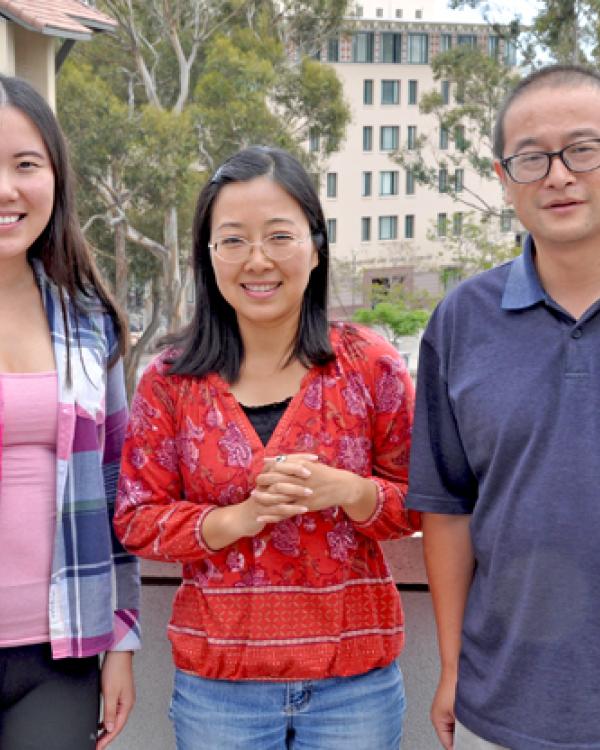
Simeng Li (from UCSB) with Chun He and Ying Zhou (from UESTC)
Dr. Mian Wang and Dr. Michael Gerber of UC Santa Barbara’s Gevirtz School, along with doctoral student Simeng Li, have arranged with the University of Electronic Science and Technology in Chengdu, China (UESTC) to offer a special scholar-in-residence program in Learning Sciences Applied to Higher Education Pedagogy for several small cohorts of instructors from UESTC. Currently seven Chinese scholars are visiting UCSB.
The scholars all have about five years of experience teaching STEM subject matter at UESTC, including courses in computer science, electrical and computer engineering, and allied sciences. As part of the six-month project, the scholars have been attending seminars, observing courses, discussing teaching strategies and innovations, and studying ways to improve undergraduate student engagement and learning.
Professor Chun He, who teaches undergraduate engineering courses at UESTC, learned about the Gevirtz School through other scholars who had participated in exchange programs such as the one here at UC Santa Barbara. As technology develops quickly in China and around the world, educators like Professor He must adapt to prepare the next generation of STEM students.
“Now, we are facing difficulties in how to face the fast development of technology,” Dr. He says. “At our university, we prepare for innovation. We want to transform our traditional education method, and hopefully that will benefit from this project.”
Dr. He’s main objectives in the project include learning how to stimulate creativity and independent problem solving skills in the undergraduate STEM students she interacts with every day. “I was facing problems like ‘How to make undergrads engage in science?’ and ‘How to fascinate their independent thinking?’” Dr. He says. “I think our project has a close relationship to those questions.”
Dr. He has been impressed with the depth and breadth of learning material available through the program. Each week, the scholars read relevant research articles on teaching theories, meet for group discussion, observe labs, and attend lectures as part of the immersive learning experience. The teaching techniques discussed have been both traditional and experimental, allowing the group to explore new ideas such as the flipped classroom, iClickers, and more. Dr. He also values the expertise Dr. Wang and Dr. Gerber have to offer as professors of education. “We are not majors in education, so we lack this knowledge,” Dr. He said. “It’s a good complement for us.”
The visiting scholars have had the special opportunity to observe undergraduate engineering lab classes at UCSB in order to understand the active learning process. Professor Ying Zhou, who also teaches engineering courses at UESTC, noted that while the content of his engineering classes in China is similar to the course content here, the differences in presentation and organization of the content is crucial to student learning. Zhou claims, “I have learned how the teachers organize the course and content differently from my course, and have compiled the different content organization and ideas.”
Among the biggest differences in lab courses is the creative, hands-on way the experiments are presented. Professor Zhou noticed the smaller class sizes at UCSB, and both professors were impressed by the teaching assistants’ involvement. “The teacher just gives the students materials,” Dr. Zhou says. “All the work is done by themselves.”
Professor Zhou thinks that this independent, problem solving based approach fosters more of an active learning mindset than the labs he has taught in the past. “We want to go back and change that,” Zhou asserts. “This is the goal of the project here at UCSB.”
For Dr. He, one of the biggest breakthroughs she has had is helping students truly master the material she is teaching. “We learned a lot of things from the professors’ teaching methods in meetings, and reflect on our own methods, and I think there’s a close relationship between the theory and the practical,” Dr. He says. “For myself, I see a big change.”